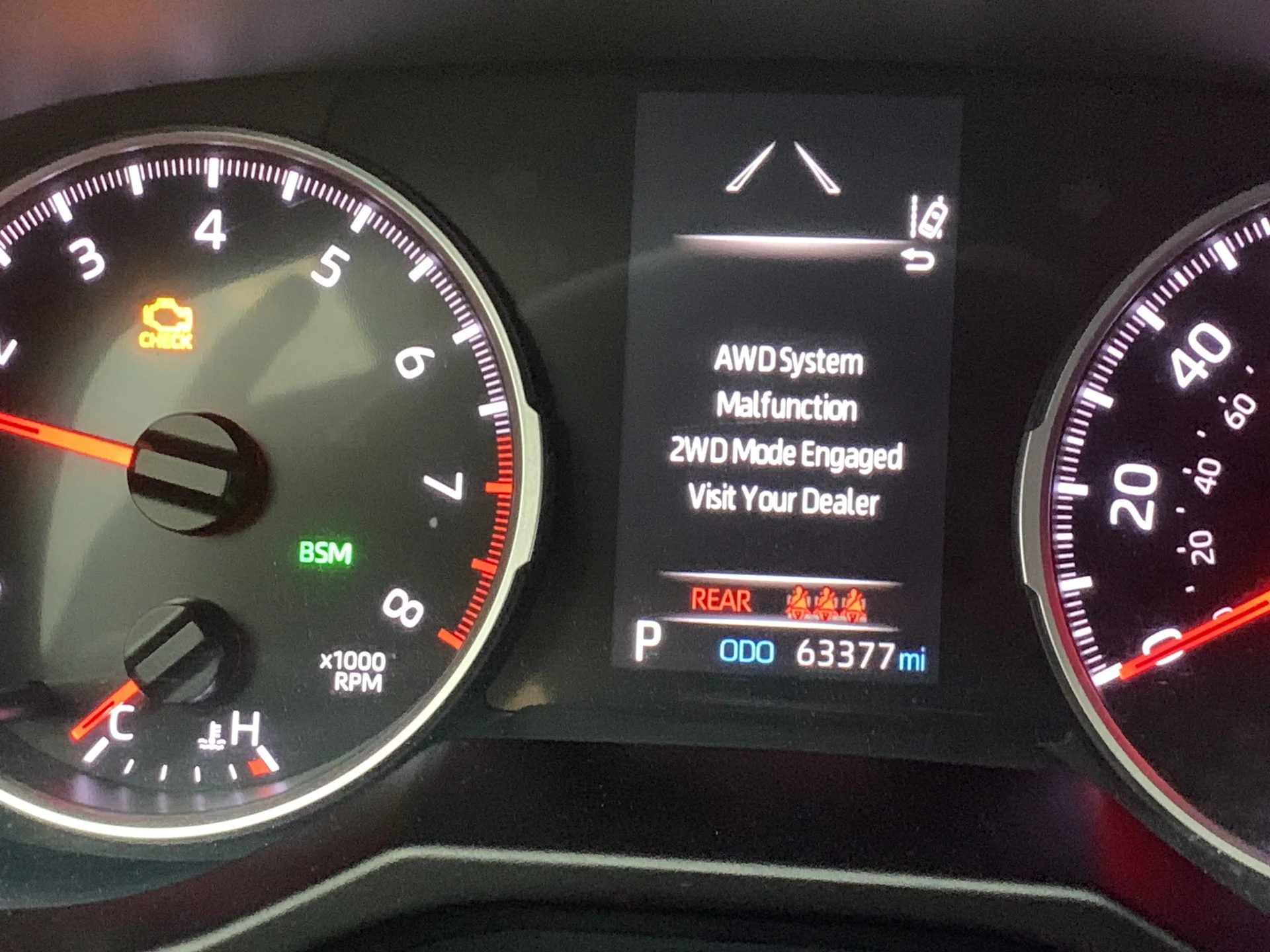If a warning message pops up saying 2WD mode engaged on your Toyota RAV4 or other all-wheel drive car, there could be an issue with its mechanics that requires immediate attention from an expert mechanic. As this poses a potential safety threat, have it examined as soon as possible to avoid potential delays.
Loose Gas Cap
The gas cap is an integral component of your vehicle’s emissions control system and should serve to keep vapors from escaping into the air, where they could harm both engine performance and the environment. If it becomes loose or broken, however, engine pressure might no longer hold and this could trigger the Check Engine Light.
As soon as your gas cap becomes loose or broken, you should notice an obnoxious aroma of raw fuel escaping the tank – usually an indication that its seal has become compromised – the engine could suffer poor performance or even stall completely. You should tighten or replace it immediately if loose, with tightening necessary only in cases of loose caps or damaged ones.
Sometimes you may come home to find that your dashboard displays an message reading “AWD System Malfunction 2WD Mode Engaged Visit Your Dealer,” signalling that the AWD system on your Toyota RAV4 has failed to function as expected and only drives two wheels at once in two-wheel-drive (2WD) mode. While you could try resetting it by disconnecting and reconnecting the battery temporarily to clear away glitches in its electronics, if this problem continues it should always be taken to a professional mechanic for inspection.
Check Engine Light
Your car is actually an advanced computer on wheels with many electronic control units (ECUs) monitoring engine temperature and emissions levels, sending signals directly to the check engine light when something seems amiss.
The light can either be solid or flashing depending on the severity of the issue. In general, if it’s solid you should be safe driving to a repair shop; otherwise flashing means there may be damage to your engine which necessitates immediate pulling over as this could be dangerous and unsafe driving conditions.
Many drivers believe they can simply reset the check engine light to switch it off, however this can actually be dangerous and cause further issues down the line. Furthermore, since the code that caused your check engine light to illuminate remains stored within your computer system a scan tool or diagnostic software must be installed in order to quickly find and address any potential issues with your car’s performance.
There are various triggers for the check engine light and AWD malfunction warning to appear, for instance a loose gas cap has been reported by owners as one such cause of this warning; however, this doesn’t address its source and most likely requires you to visit your local Toyota dealership or mechanic to address.
Faulty Wheel Speed Sensors
Toyota RAV4 2WD Mode AWD systems depend on knowing how fast each wheel is spinning to accurately assess whether or not to engage, which information is relayed via signals from vehicle speed sensors (which also provide data to ABS and VSC safety features). If these sensors become damaged or fail altogether, awd systems may no longer function effectively – their low voltage signal pulses relayed directly to control modules may no longer function effectively as intended; failing sensors often trigger warning lights or disable certain features like stability/traction control systems altogether.
Rusting corrosion of electrical connections is usually to blame for an ailing speed sensor, and should be checked using a multimeter equipped with digital ohmmeter setting to measure resistance. If sensor and tone ring are installed within axle hub, removal may allow further inspection for signs of corrosion on contacts.
Newer active speed sensors utilize digital signals generated by the ABS module for more accurate readings at lower speeds; since these sensors don’t need to generate their own voltage themselves. Unfortunately, however, these active speed sensors require special tools in order to test them; such as scan tools that communicate directly with ABS modules or scopes capable of graphing digital output signals.
Faulty Tires
Tires are a vehicle’s sole point of contact with the road, making their failure particularly risky. Tires may become defective for various reasons including age, over or underinflation, misalignment or road hazards and may explode, deflate or separate from its steel belt causing drivers to lose control and cause serious swerve, spin or rollover accidents which often involve multiple vehicles at once – sometimes fatal ones too!
Other causes of an AWD system malfunction can include a bad transmission oil pump or transmission range sensor. Sometimes these sensors fail due to mechanical damage from rodents and debris or corrosion caused by rodents themselves; as well as overheating issues and transmission shift issues.
Faulty fuel pumps often set off warning lights and are typically an easy fix for most mechanics; however, if affected by an ignition switch malfunction it could prove more challenging to address.

